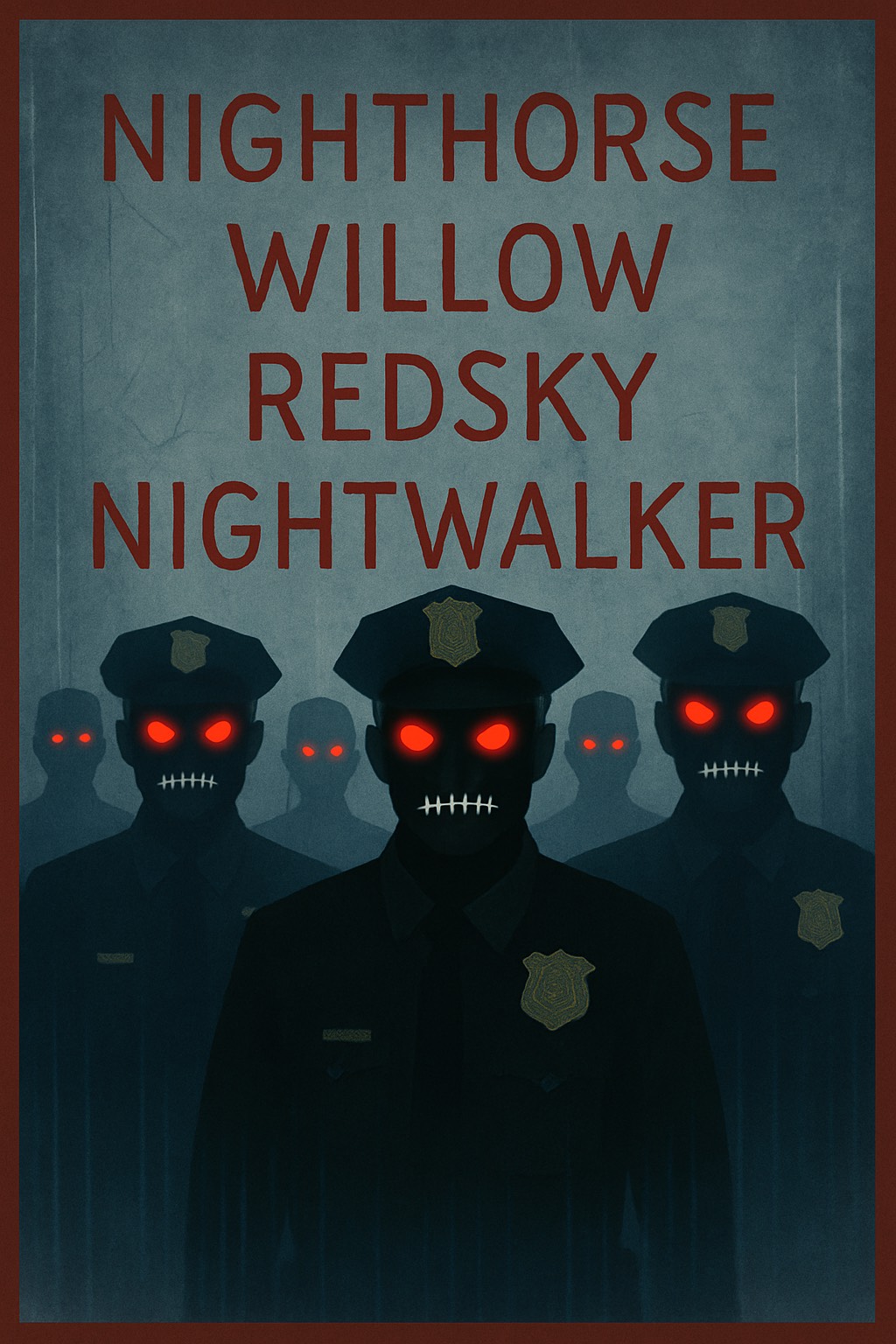Career Focus
So, You’re Going Back To School
This is a starting point for navigating the adult education system, our Adult Education 101. Topics include:
- getting a high school diploma and whether you need to do so
- academic upgrading
- prior learning assessment programs
- bridging programs
- free programming
- apprenticeships
- community-based training
- learning for fun
- learning for work
Now, take a deep, deep breath….
Start shopping — an overview for adults
originally published September, 2011
Adults find shopping for courses confusing for several reasons. There is no friendly high school guidance counselor to help; adult education is like a market place with providers selling their courses rather than telling you about a more suitable one elsewhere; reading a course calendar is as difficult as reading a computer manual. And for newcomers the whole education system here is new and confusing.
Should you study in class or online?
More and more programs are going online
Online learning is more flexible as you don’t have to be in class every week. However, most courses have due dates for assignments. A few have a flexible schedule like the Independent Learning Centre where you can go as fast as you want or as slow. The flexibility works well for adults who often have competing demands on their time.
Some distance education courses have continuous intake like those offered through the Independent Learning Centre where you earn high school credits, or take ESL courses (see www.ilc.org). Many have a monthly intake, like the colleges. Go to www.ontariolearn.com to see listings or check the college calendar where online courses are listed. Many are based on the same term schedules as in-class courses. For universities, go to www.cvu-uvc.ca.
On-line courses will develop your computer skills and on-line research skills. However, on-line learning requires you to be self-disciplined. It is very easy to put off doing your assignment on-line, whereas you cannot put off going to class.
In the world of adult education, you’ll need a shopping basket
Shopping around for courses is time consuming for adults. They start from where they are and reach out into various educational sectors in order to meet a variety of needs, unlike children who start at grade 1 and go on to the next grade up a ladder of specified courses.
For example, an adult learner could go to a college one night a week for an accounting course and fit in a business administrative course on-line from a university. Both courses would be accredited to a Certified General Accountants program. Then on Saturdays, this student could take a painting class at the local school for his/her own interest.
Where to find courses and programs
For those living in Toronto and the GTA, check out our list of neighbourhood learning sites for educational providers in your area.
Academic upgrading
Boards of education
School boards in Toronto and the GTA offer high school credits in adult day schools where you go full-time, or through evening courses where you go part-time.
You can earn high school credits on-line or by correspondence through the Independent Learning Centre (see on-line info above).
You can earn the equivalent of high school program by doing General Education Development (GED). This is a test which you study for and if you pass, you get a high school equivalency diploma. Call 211 or visit their website at 211toronto.ca to see who offers this program.
Do you need a high school diploma?
Admission criteria for college or university programs often say that a high school diploma is required. But they also describe something called “mature student” admission for those who haven’t completed high school. This does not mean someone who is as old as your mother. It is anyone who is over 18 and has been out of school for a year or two and does not have a high school diploma.
At the same time, most programs say you need high school or the “equivalent.” This means you can be admitted based on knowledge and experience gained from work or volunteer activities. You may opt to take high school courses to help prepare for the demands of college or university, but there are other options.
(Note that high school diplomas are accepted from other countries. Colleges have lists of high schools from all over the world which they accept as equivalent to an Ontario secondary school.)
College academic upgrading – FREE!
When you think of college courses you assume you’ll have to pay tuition — but some college courses are free.
When applying to a college full-time program without a high school diploma or with one from another country, your English, math and science skills will be tested to see if you are up to the level needed to do the program. If not, you can do a free academic upgrading program. These are open to newcomers and to people educated in Canada. These upgrading programs are usually listed in the full time day calendars.
(Note that most part-time courses which are offered in the evening have open admissions, which means you can register and try any course. If you fail, it’s your time and money lost.)
Each of the college upgrading programs has a slightly different name:
- George Brown School of Work and College Preparation 416-415-5000;
- Seneca Academic Upgrading 416-5050 Ext 4772;
- Centennial Career and Work Transitions 416-289-5000 Ext. 7022;
- Humber Academic Upgrading 416-675-5522 Ext. 4905
- Sheridan Workforce Development Program 905-845-9430;
- Durham Academic and Career Entrance 905-721-2000 (and you can do these ACE courses online, see http://www.acedistancedelivery.ca/)
University
Both full-time day and part-time evening programs have admissions criteria — you must apply and be accepted into a program.
However, bridging courses are offered to those who do not meet the admission criteria. By earning a certain mark in your bridging course, you can be admitted to a university program and the qualifying course can count as a credit in your program.
For bridging programs, call:
- the Academic Bridging Program at the University of Toronto, Wordsworth College 416-978-7487
- the Pre-University Studies program at York University, the Division of Continuing Education, Faculty of Arts and Science at 416-736-5616
At Ryerson University, by doing well in the open admissions courses offered through the G.Raymond Chang School of Continuing Education, you can demonstrate your ability to handle a full-time credit program.
For newcomers, admission criteria for English can be earned through ESL university programs instead of writing TOEFL or COPE tests. See next section.
English for newcomers
For newcomers, choosing a course can be overwhelming as there are so many options. Often, the first place you learn is recommended by a friend, then you learn to shop around.
Newcomers always ask what the difference is between LINC (Language Instruction for Newcomers) and ESL (English as a Second Language). The differences are:
- LINC gets funding from the Canadian federal government, and ESL from the Ontario government.
- LINC only accepts landed immigrants, but ESL programs accept refugee claimants and citizens.
- Through LINC you may be eligible to receive TTC tickets and some programs have child minding while in an ESL program, people on social assistance qualify for a Metro pass if you do some volunteer work in the community. Sometimes subsidized childcare is provided if space is available.
ESL is really a school board program, but classes are often run in community centres or libraries. LINC courses can be run by a school board or community association. Check our Metro Neighbourhood learning sites list for school boards or call 211 or visit 211toronto.ca for community associations, to find out where LINC and ESL courses are offered.
High school ESL
Some newcomers choose to learn English in an adult day school program as they like the structure of a curriculum driven course. High School, ESL and LINC focus on skill development, although LINC is more curriculum driven.
Flexible programs
The high school credit programs and LINC tend to have set standards for attendance and lateness. If you are away only a few days, you are dropped from the program. ESL programs are more flexible; you can be absent for various reasons and start back when you are ready.
Online
You can do credit or non-credit ESL at the Independent Learning Centre. Call 416-484-2704. You need a volunteer to help you do the course though. ???
Libraries
Many libraries have ESL Conversation Circles and other programs for newcomers which are free. Ask for a What’s On program guide at the library.
As well, libraries have large collections of ESL resources such as taped stories or grammar books to borrow. As well, look for taped stories in the children’s section which can be useful for adults.
Online programs
The web has many free ESL sites. Just punch ESL into Google and shop around.
ESL fee-based courses
So far we have covered courses that are free of charge.
The colleges have some ESL courses with fees and some without, and there are the free Academic Upgrading programs (see High School Section). University and private language schools are fee based.
Colleges
ESL college programs usually require LINC or ESL Level 5. But you will be tested and if you score well enough, you will be admitted. Remember the market factor in adult education. It is better for the college to have you in their program than in a school board or community program.
Universities
Here you must pay a fee but if you obtain a certain mark, you don’t have to write TOEFL or COPE . Call:
- the English Language Program at the School of Continuing Studies at the University of Toronto 416-978-5104
- York University English Language Institute 416-736-2100
- the G. Raymond Chang School of Continuing Education at Ryerson 416-979-5036
Language Schools
Private Language Schools are listed in the Yellow Pages under Schools-Languages. They charge fees.
Learning for fun – General interest courses
Baby boomers, now starting to retire, are looking for courses that interest them such as painting, music, languages, exercise, dance, digital photography, crafts—anything from the arts to yoga. For a full listing of creative courses, see the December 2010 issue of Learning Curves at www.learning-curves.ca. XXXXX
People study the “fun stuff” for a variety of reasons. You might just want to meet people with the same interests, and any of the courses can be taken for work-related purposes.
School boards, Parks and Recreation Centres, Libraries
The Toronto District School Board lists these courses on www.learn4life.ca. The Parks and Recreation Centres list these courses in a booklet called Toronto Fun. The libraries are not just a place to borrow books; they also have G.I programs. Ask for the What’s On guide. All of these programs are low-cost or free. At the schools and recreation centres there is a reduced rate if you are on social assistance.
Colleges
Part-time studies calendars for the colleges list similar programs in subjects like computers, photography, languages, lifestyle, and special interest. However, each college has programs specific to it like: George Brown’s Culinary Arts, Fashion and Jewellery, Dance; Humber’s Arts and Performance, Horticulture, Fitness and Recreation; Sheridan’s Art and Design has drawing and painting, art using ceramics, wood and glass; Centennial’s lifestyle and leisure program has eight courses on home renovations; Durham has home sewing under Life and Leisure.
Universities
Continuing education programs at universities have open admission courses for general interest. For instance, the School of Continuing Studies at the University of Toronto offers a Creative Writing program and the G.Raymond Chang School of Continuing Education at Ryerson has a photography section for the serious amateur, among many others.
The Ontario College of Art and Design offers numerous workshops through continuing education, like sculpting.
The science centre, art gallery and museum
All three of these cultural centres — the Ontario Science Centre, the Royal Ontario Museum, and the Art Gallery of Ontario — offer courses or workshops. PROVIDE LINKS
Liberal Arts
You may be interested in liberal arts courses like history, philosophy, sociology, psychology, world religions, art history, literature, economics and so on.
For a guide to liberal arts courses, check out finding liberal arts on this site.
Colleges
At the colleges liberal arts courses are listed under Liberal Studies or General Education. Humber has one of the largest offerings in this area.
Universities
Liberal arts courses are really the forte of the universities, but they do not have open admissions except for their Continuing Education departments. You need to apply as a special student to take a course without being admitted to the program.
You need to look through the calendars for the Faculty of Arts and Sciences at the U. of T. and the Faculty of Liberal Arts and Professional studies at York U. At Ryerson they are listed under the subject headings. A lot of these will be offered in the daytime, but some will be in the evening. For online learning offerings go to www.distanceedcanada.ca.
Programs for seniors
There are special departments that develop courses just for seniors. At the University of Toronto, there is the Academy for Lifelong Learning; at Ryerson, the Life Institute; at George Brown College, the Senior’s Association. At the Toronto District School Board, there are seniors’ daytime courses listed in their Learn4Life calendar.
Learning for work (professional development)
One of the prime motivations for going back to school is to improve your career. Getting a certificate, diploma or degree from a college or university, or professional certification from a professional association (like the Canadian Purchasing Association), or a license for a trade, are multi-year pursuits for adults.
Adults take courses through part-time studies at a college or the continuing education program at a university or a school board, in the evening or on weekends, where there is open admissions.
Some adults go in the day to college programs full time or part-time, but here you must be admitted to the program before taking the course.
For university, whether you go part-time or full-time during the day, or part-time at night (if you go three nights a week this is considered full time), you must be admitted to a program of study to take any of these courses.
Note that if you are interested in medical technology, you should check out the Michener Institute of Technology which specializes in this area.
Part of being admitted is dealing with whether you have a high school diploma. See the first section of this article.
Laddering your way up to a degree
For many newcomers, the relatively new partnerships between colleges and universities in Ontario are quite confusing since in their countries, colleges and universities are quite separate. For Ontarians who haven’t thought about education for awhile, the partnerships can be a puzzling development. The confusion can result in a waste of time and money.
Here’s how you ladder up to a university degree, starting with evening courses at a college:
- Start with several open admission college courses at night that are equivalent to ones in the day diploma programs. Find out if the diploma program is partnered with a university degree program. If it is, get the Diploma (2 years), then go to the university partnered program for two years to get a degree.
- When you have done as many college courses in your diploma as is allowed at night, negotiate some time off work during the day to go part time, or do the courses on-line.
- Once you get the diploma, apply to the partnered university. Do as many courses as you can again at night part-time, and again negotiate time off work to go part-time in the day or do on-line courses.
College courses have lower tuition than university ones, so you could save money and you don’t have to give up your job and lose valuable work time.
Professional associations
Colleges and universities partner with professional associations. Their calendars will indicate which ones. So a course could count towards a diploma and towards the certification program of a professional association. In the laddering process described above, you could also be earning professional certification by applying your college and university courses to this designation, as well as a degree.
For a full examination of professional associations and articles detailing membership based associations for engineers, computer specialists, health care practitioners, and business support staff like accountants, purchasing clerks see the February/March 2010 issue of Learning Curves at learning-curves.ca. There are articles on this topic listed there. XXXXXXXX
Most importantly, these associations have job banks. If an employer wants a purchasing clerk, s/he will post a notice in the job bank, for instance, of the Canadian Purchasing Association. You are tapping into a great hidden job market.
Professional associations are membership-based, so you don’t need certification to join. Some work experience, either here or from another country, will do.
The Associations Canada directory found in most libraries will lead you to over 17,000 associations.
Career Colleges
These are private colleges, so the tuition is higher than public colleges like Centennial. However, a lot of students who take career college programs qualify for tuition support programs like Second Career.
Career colleges are smaller than large public colleges, and therefore more personal. Here, you can go as fast as you are able, then slow down when you hit course work that is harder. They can do this because the class sizes are quite small, fewer than 15, so the teacher can customize the course.
See http://www.oacc.on.ca/ for a list of career colleges. Note that you can earn professional association designations at these colleges too. However, it can be difficult to transfer credits from private colleges to public educational institutions.
Use previous learning to get in, then negotiate advanced standing
A word of advice. First negotiate admission based on your previous education and work experience, but don’t start to ask for exemptions from courses until you are admitted.
Why? If you are admitted to a full time program, the institution expects to get funds from the government for each course you take. If you start asking for exemptions before you are even admitted, they know they will not be getting as much funding for you. Self-interest makes them less interested in you.
Colleges have a prior learning assessment process which evaluates previous courses and learning to see what you can be exempted from once you are admitted. Universities don’t have this, but have something called advanced standing XXXX which you can apply for. Adult day schools will give you credits for work and life experience in your high school program.
Apprenticeships – trades training
In an apprenticeship, you are actually paid to learn. You work for a mechanic, for example, who agrees to train you to be a fully licensed mechanic. Most people think of a tradesperson as a plumber, electrician etc., but the trades cover a much broader group of occupations than you might think. You can become a baker, early childhood educator, hairdresser etc.
Call the following Ontario Apprenticeship Offices to have your previous training assessed. GET LINK
- Mississauga 905-279-7333
- Toronto 416-326-5899
- Pickering 905-837-7721
For information on grants for apprenticeship training, see the Learning Curves article Apprenticeship grants in Adult education options > How to pay for it on this site.
Community based training
These programs are organized by community-based organizations. Like career colleges, they are small and more personal. However, they are not-for-profit organizations funded by the Ontario government to train specific groups who may have more trouble finding work, like women, newcomers, and older workers. Skills for Change and Working Women are example of these. Call 211 or visit their website 211toronto.ca for others.
Financial aid
There is financial aid for part-time students, so be sure to find the Financial Services office on campus and ask if there are any bursaries you could qualify for.
Don’t forget to ask your employer to help pay for your course. Many will if asked.





